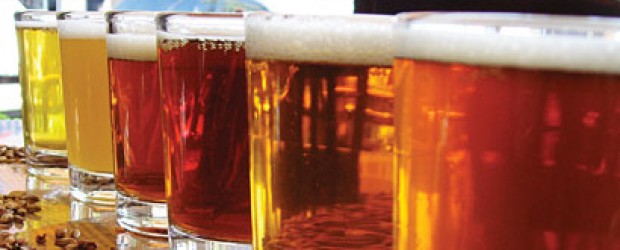So when I’ve brewed it’s usually spurred by running out of German lager on tap. My father-in-law, Louis deLatour, likes to talk about when he went to Germany as a very young man and all the time he spent in the various brew halls including the famous Hoffbrauhaus in Munich. This was post World War II as his father was a high ranking military officer and working in France as part of that post war effort. He’ll come over and tell me the same stories, but they’re great. If I have a German lager, he’ll give very honest feedback on it and compare/contrast it to what he had back in Germany.
So I use Lou as a bit of a Guinea pig with these lagers. Because he has no filter and can’t hide it if he doesn’t like a beer. He compares all German lagers to those of the masters. I refined down a winning Festbier with him and brewed it multiple times over. German pilsner was too bitter for him even though I thought it was awesome. (I also tested high quality commercial versions on him and he doesn’t like those either) Bavarian pilsner he liked better. That pils is more malty and less aggressive in the bitter. So now we’ll try Munich Helles. Even less bitter and more soft/balanced. I think this will be his jam, given the likes on Festbier and an ok nod for Bavarian pilsner.
I’ve strayed away from brewing the Helles, probably because I screwed it up bad a few years ago. Given my recent success with the Germans, it’s time to try again. I’m pretty confident that I’ve figured out all the kinks of the past. It’s really all about precision with ingredients, volumes and process.
This recipe is close to the Bavarian pilsner wort. Difference is that I’m using Vienna with the pilsner malt instead of Carahell. Also using a Munich Lager yeast. Subtle changes, but subtlety seems to really matter with the German lagers.
Brew day went well. Took my time an dialed in the calculations. Volume was spot on. Gravity was spot on. Currently cooling down the wort and the starter to pitch tomorrow morning.
Recipe Details
| Batch Size |
Boil Time |
IBU |
SRM |
Est. OG |
Est. FG |
ABV |
| 6.5 gal |
90 min |
32.8 IBUs |
3.3 SRM |
1.049 |
1.011 |
4.9 % |
Style Details
| Name |
Cat. |
OG Range |
FG Range |
IBU |
SRM |
Carb |
ABV |
| Bohemian Pilsener |
34 |
1.044 - 1.056 |
1.014 - 1.02 |
30 - 45 |
3 - 7 |
2.2 - 2.8 |
4.1 - 5.1 % |
Fermentables
| Name |
Amount |
% |
| BEST Pilsen Malt (BESTMALZ) |
11 lbs |
95.65 |
| BEST Vienna (BESTMALZ) |
8 oz |
4.35 |
Hops
| Name |
Amount |
Time |
Use |
Form |
Alpha % |
| Saaz |
3.75 oz |
60 min |
Boil |
Pellet |
2.8 |
| Saaz |
0.25 oz |
0 min |
Boil |
Pellet |
2.8 |
Yeast
| Name |
Lab |
Attenuation |
Temperature |
| Munich Lager (2308) |
Wyeast Labs |
75% |
48°F - 56°F |
Mash
| Step |
Temperature |
Time |
| Mash In |
152°F |
60 min |
